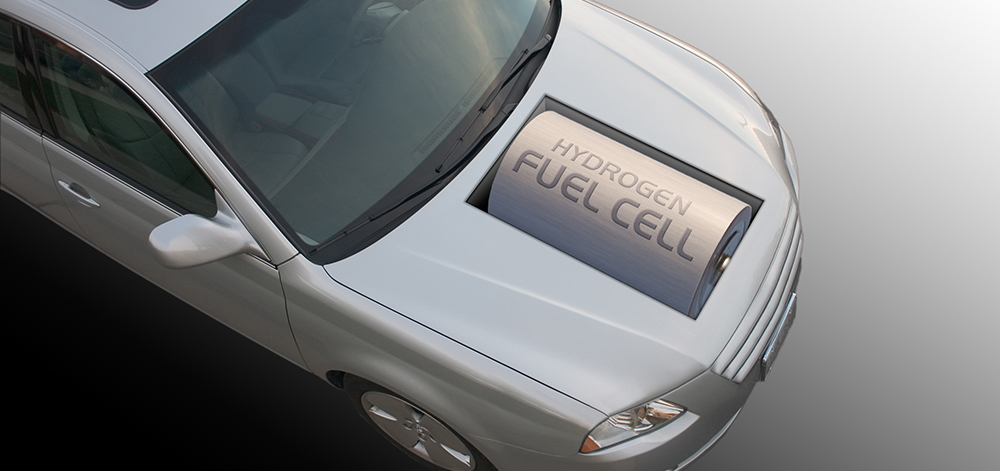The Future of Hydrogen Fuel Cell Technology

Hydrogen Fuel Cell
Understanding the Potential Benefits and Limitations of Hydrogen Fuel Cell Technology
Hydrogen fuel cell technology refers to machinery and vehicles that use hydrogen as a primary source of power, converting the chemical energy of hydrogen into available mechanical energy by reacting hydrogen with oxygen. On the market today there are three hydrogen cars available to consumers – Toyota’s Mirai, Hyundai’s ix35 FCEV and Honda’s Clarity, with additional vehicle manufacturers hoping to expand upon the technology in an effort to increase its mainstream appeal. A wide spectrum of vehicles and machines are already able to run on hydrogen, including trains, buses, motorcycles, submarines, rockets and automobiles, and the primary source of hydrogen at this time is currently natural gas. Renewably sourced hydrogen is an option, and being further developed, but production is cost prohibitive compared to when sourced from natural gas, so the future of hydrogen as a green alternative to fossil fuels is yet to be seen.
The Production of Hydrogen
Unlike fossil fuels which are readily available energy sources for immediate combustion, hydrogen must be produced and then stored under pressurization. Hydrogen can be produced in a variety of thermochemical methods that include:
- Natural Gas Reformation
- Coal Gasification
- Liquid Petroleum Gasification
- Biomass Gasification
- Thermolysis
- Biological Hydrogen Production (Biohydrogen)
- Electrolysis
At present, roughly 95% of the hydrogen produced is derived from natural gas with only 14.9% of US hydrogen coming from renewable sources. 85% is being used as a means for removing sulfur from gasoline, so it has yet to become a mainstream source of fuel. Once produced, it must be compressed as a gas or liquified before being transported via truck or pipeline and it must remain under constant pressure. In some countries such as Iceland and Denmark, alternative hydrogen production is in use with geothermal and wind development, but the cost of producing hydrogen using alternative sources is currently much higher than from natural gas.
Hydrogen Storage and Infrastructure
With its low volumetric energy density, on-board hydrogen storage in vehicles is minimal in comparison to gasoline, requiring higher pressurization, and scientists are currently working to expand storage systems that will allow for higher driving ranges beyond 300 miles. For the hydrogen economy to be viable, an expanded transport and pumping infrastructure needs to be developed, making it easy for consumers to fuel up when needed across large geographic areas. Current infrastructure consists of hydrogen pipelines, sporadically dispersed filling stations equipped with a hydrogen supply and compressed and liquid hydrogen tanks. Similar to the infrastructure needed to further the mainstream usage of electric vehicles with charging stations conveniently located across the country, hydrogen stations will need to be readily available to consumers, which will cost upwards of 20 billion dollars by some estimates in the US alone.
Limitations and Concerns
Hydrogen fuel cell technology has significant limitations when it comes to becoming a widespread solution for automobiles and as a “renewable” alternative to fossil fuel consumption. The development of hydrogen infrastructure would be extensive and expensive, and some critics say that it takes valuable energy and attention away from the development of more viable options such as electric vehicle technology. It could take decades for hydrogen to have a notable impact on fossil fuel usage, and many believe that hydrogen technology is not as clean as it claims to be. Producing hydrogen to generate energy requires energy, and since the majority of hydrogen is derived from natural gas and methane and does not come from renewable energy sources, it may not be the best option for offsetting carbon emissions produced through the development and usage of fossil fuels. Developing the means by which to produce hydrogen using alternative sources would require a significant investment, as would establishing a sufficient hydrogen fueling and storage infrastructure, and as a result, a study conducted by UC Davis in 2009 found that over the lifetime of a hydrogen fuel cell vehicle, more carbon would be emitted than in a gasoline, internal combustion engine. With the energy cost of producing the hydrogen and then storing it under high pressurization, its “well-to-wheel” efficiency has been estimated at roughly 25%.
The Bottom Line
With companies and countries alike working hard to decrease their dependence on fossil fuels, hydrogen fuel cell technology is a definite contender as an alternative fuel source. Regardless of its current technological limitations and the concerns of environmentalists and economists who question its efficacy as a viable fuel solution, hydrogen fuel cell technology continues to be developed, and in the coming months and years we will likely see it implemented in more and more mainstream capacities.
Contact an SCL Consultant Today
In a wide range of industrial sectors, SCL is committed to being the number one logistics and solutions provider for the products that protect and optimize the machines that keep our country moving. We pride ourselves on remaining at the forefront of industry trends and technological innovations, and as the market continues to evolve, we are committed to providing extensive product and industry knowledge and total performance satisfaction for our customers. For information on how we can assist your fleet in choosing the optimal products at a competitive price, contact an SCL consultant today.
